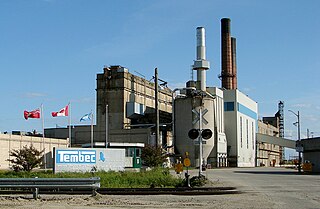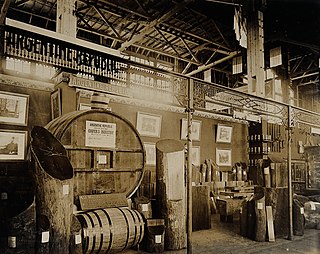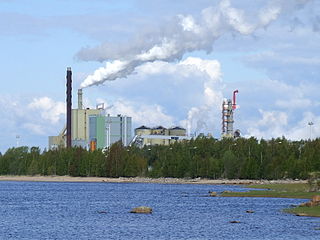
The economy of the Dominican Republic is the eighth largest in Latin America, and is the largest in the Caribbean and Central American region. The Dominican Republic is an upper-middle income developing country primarily dependent on mining, agriculture, trade, and services. The Dominican Republic is on track to achieve its goal of becoming a high-income country by 2030, and is expected to grow 79% in this decade. The country is the site of the single largest gold mine in Latin America, the Pueblo Viejo mine. Although the service sector has recently overtaken agriculture as the leading employer of Dominicans, agriculture remains the most important sector in terms of domestic consumption and is in second place in terms of export earnings. Tourism accounts for more than $7.4 billion in annual earnings in 2019. Free-trade zone earnings and tourism are the fastest-growing export sectors. A leading growth engine in the Free-trade zone sector is the production of medical equipment for export having a value-added per employee of $20,000 USD, total revenue of $1.5 billion USD, and a growth rate of 7.7% in 2019. The medical instrument export sector represents one of the highest-value added sectors of the country's economy, a true growth engine for the country's emerging market. Remittances are an important sector of the economy contributing $8.2 billion in 2020. Most of these funds are used to cover household expenses such as housing, food, clothing, health care and education. Secondarily, remittances have financed businesses and productive activities. Thirdly, this combined effect has induced investment by the private sector and helps fund the public sector through its value-added tax. The combined import market including the free-trade-zones amounts to a market of $20 billion a year in 2019. The combined export sector had revenues totaling $11 billion in 2019. The consumer market is equivalent to $61 billion in 2019.
The economy of Honduras is based mostly on agriculture, which accounts for 14% of its gross domestic product (GDP) in 2013. Leading export coffee (US$340 million) accounted for 22% of total Honduran export revenues. Bananas, formerly the country's second-largest export until being virtually wiped out by 1998's Hurricane Mitch, recovered in 2000 to 57% of pre-Mitch levels. Cultivated shrimp is another important export sector. Since the late 1970s, towns in the north began industrial production through maquiladoras, especially in San Pedro Sula and Puerto Cortés.

The economy of Paraguay is a market economy that is highly dependent on agriculture products. In recent years, Paraguay's economy has grown as a result of increased agricultural exports, especially soybeans. Paraguay has the economic advantages of a young population and vast hydroelectric power but has few mineral resources, and political instability has undercut some of the economic advantages present. The government welcomes foreign investment.
Boise Cascade Company, which uses the trade name Boise Cascade, is a North American manufacturer of wood products and wholesale distributor of building materials, headquartered in Boise, Idaho.

Tembec Industries Inc., known as Tembec, was a paper company in Canada, founded by Frank Dottori. In 2011, Tembec had approximately 3000 employees, with locations in Canada, United States, and France. Tembec's operating divisions included Forest Products, Pulp, Paper & Paperboard, and Chemicals.

Louisiana-Pacific Corporation, commonly known as "LP", is an American building materials manufacturer. It was founded in 1973 and is currently based in Nashville, Tennessee. LP pioneered the U.S. production of oriented strand board (OSB) panels. Today, LP is the world's largest producer of OSB, and manufactures engineered wood building products. LP products are sold to builders and homeowners through building materials distributors and dealers and retail home centers.

Brazilian industry has its earliest origin in workshops dating from the beginning of the 19th century. Most of the country's industrial establishments appeared in the Brazilian southeast, and, according to the Commerce, Agriculture, Factories and Navigation Joint, 77 establishments registered between 1808 and 1840 were classified as “factories” or “manufacturers”. However, most, about 56 establishments, would be considered workshops by today's standards, directed toward the production of soap and tallow candles, snuff, spinning and weaving, foods, melting of iron and metals, wool and silk, amongst others. They used both slaves and free laborers.

The economy of Ontario is diversified. Ontario is the largest economy in Canada.With GDP of 1.86 trillion Though manufacturing plays an important role in Ontario's economy responsible for 12.6% of Ontario's GDP, the service sector makes up the bulk, 77.9%, of the economy. Ontario’s net debt-to-GDP ratio will rise to 40.7% in the year 2019-2020.
Romania has been successful in developing dynamic telecommunications, aerospace, and weapons sectors. Industry and construction accounted for 32% of gross domestic product (GDP) in 2018, a comparatively large share even without taking into account related services. The sector employed 26.4% of the workforce. With the manufacture of over 600,000 vehicles in 2018, Romania was Europe's sixth largest producer of automobiles. Dacia is producing more than 1,000,000 cars a year.
The Russian forestry industry is a set of Russian industries related to wood harvesting and processing. As one of the oldest sectors in the country's economy, Russia's timber industry continues to bring in about $20 billion per year. Russia has more than a fifth of the world's forests, making it the largest forest country in the world. According to data for 2015, the total forest area has exceeded 885 million hectares, representing 45% of the total area of the country. The stock of wood in the area was 82 billion cubic meters.

The forestry sector in Argentina has great potential. The geography of the country extends from north to south, encompassing 4,000 kilometres (2,500 mi). Its variety of climates, land quality, and reliable precipitation allow for the cultivation of different tree species at high growth rates. The climate varies and most areas are quite temperate. The country also enjoys short harvest periods for the most important species. This has allowed the industry to become more competitive and continue its high growth rates.
Pakistan's industrial sector accounts for about 64% of GDP. Cotton textile production and apparel manufacturing are Pakistan's largest industries, accounting for about 65% of the merchandise exports and almost 40% of the employed labour force. Cotton and cotton-based products account for 61% of export earnings of Pakistan. The consumption of cotton increased by 5.7% over the past five years while the economic growth rate was 7%. By 2010 the spinning capacity increased to 15 million spindles and textile exports hit $15.5 billion. Other major industries include cement, fertilizer, edible oil, sugar, steel, tobacco, chemicals, machinery and food processing.

The Great Lakes Paper Company was the operator of the largest and most modern pulp and paper manufacturing facility in the world. The Company employed over 4,000 in Northern Ontario, starting in 1924 as a pulp mill at Fort William, Ontario. Great Lakes had a highly developed social network within the company, including a children's Christmas party held at a local arena, and an annual picnic held at a local park, as well as many sports teams and other social groups. The company's working environment was enhanced by cultural diversity. For example under the Government of Canada's immigration policy, the "Close Relatives Scheme" resulted in over 400 Ukrainian refugees being employed as workers after World War II.

Manufacturing in the United States is a vital sector. The United States is the world's third largest manufacturer with a record high real output in Q1 2018 of $2.00 trillion well above the 2007 peak before the Great Recession of $1.95 trillion. The U.S. manufacturing industry employed 12.35 million people in December 2016 and 12.56 million in December 2017, an increase of 207,000 or 1.7%. Though still a large part of the US economy, in Q1 2018 manufacturing contributed less to GDP than the 'Finance, insurance, real estate, rental, and leasing' sector, the 'Government' sector, or 'Professional and business services' sector.
Pan Pac Forest Products Ltd is a Japanese owned forest products company based in Whirinaki, near Napier, New Zealand. The company includes forestry operations, manufacturing and sales of TMP wood pulp and lumber products, employing approximately 360 staff.
The textile industry is the largest manufacturing industry in Pakistan. Pakistan is the 8th largest exporter of textile commodities in Asia. Textile sector contributes 8.5% to the GDP of Pakistan. In addition, the sector employs about 45% of the total labor force in the country. Pakistan is the 4th largest producer of cotton with the third largest spinning capacity in Asia after China and India and contributes 5% to the global spinning capacity. At present, there are 1,221 ginning units, 442 spinning units, 124 large spinning units and 425 small units which produce textile.

Forest industry in Finland consists of mechanical (timber) and chemical forest industry. Finland is one of the world's largest producer of pulp, paper and cardboard and one of Europe's largest producers of sawn timber. The forest industry directly and indirectly employs approximately 160,000 people in Finland. The industry's multiplier effects extend broadly into surrounding society.
The wood industry or lumber industry is the industry concerned with forestry, logging, timber trade, and the production of primary forest products and wood products and secondary products like wood pulp for the pulp and paper industry. Some of the largest producers are also among the biggest owners of timberland. The wood industry has historically been and continues to be an important sector in many economies.
British Columbia (B.C.) is the third largest Canadian province by population and fourth largest provincial economy. Like other provinces in the Canadian federation, B.C. consists of both private and public institutions. However, as Canada's westernmost province, located between the Pacific Ocean and the Rocky Mountains, B.C. has unique economic characteristics that distinguish it from much of the rest of Canada.
Manufacturing in New Zealand contributed $23 billion (12%) of the country's gross domestic product and directly employed 241,000 people in 2017, while manufactured goods made up 52% of the country's exports by value. The food and beverage subsector alone contributed 32% of manufacturing's GDP and 71% of exports.









